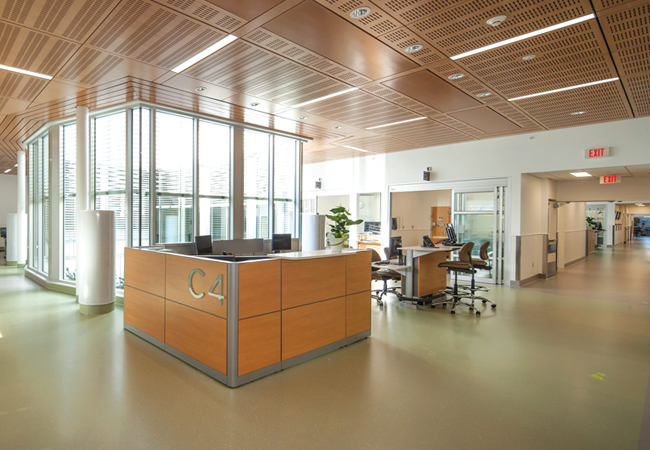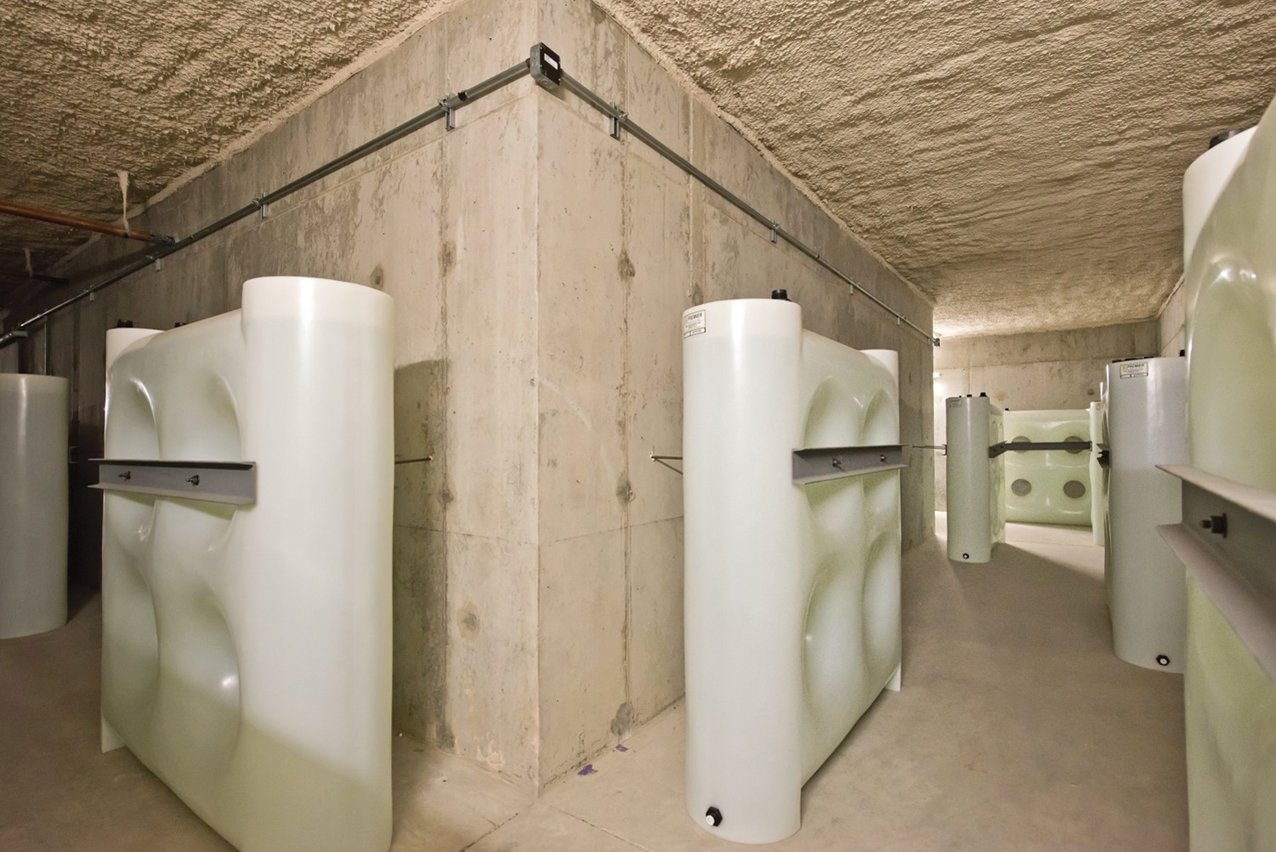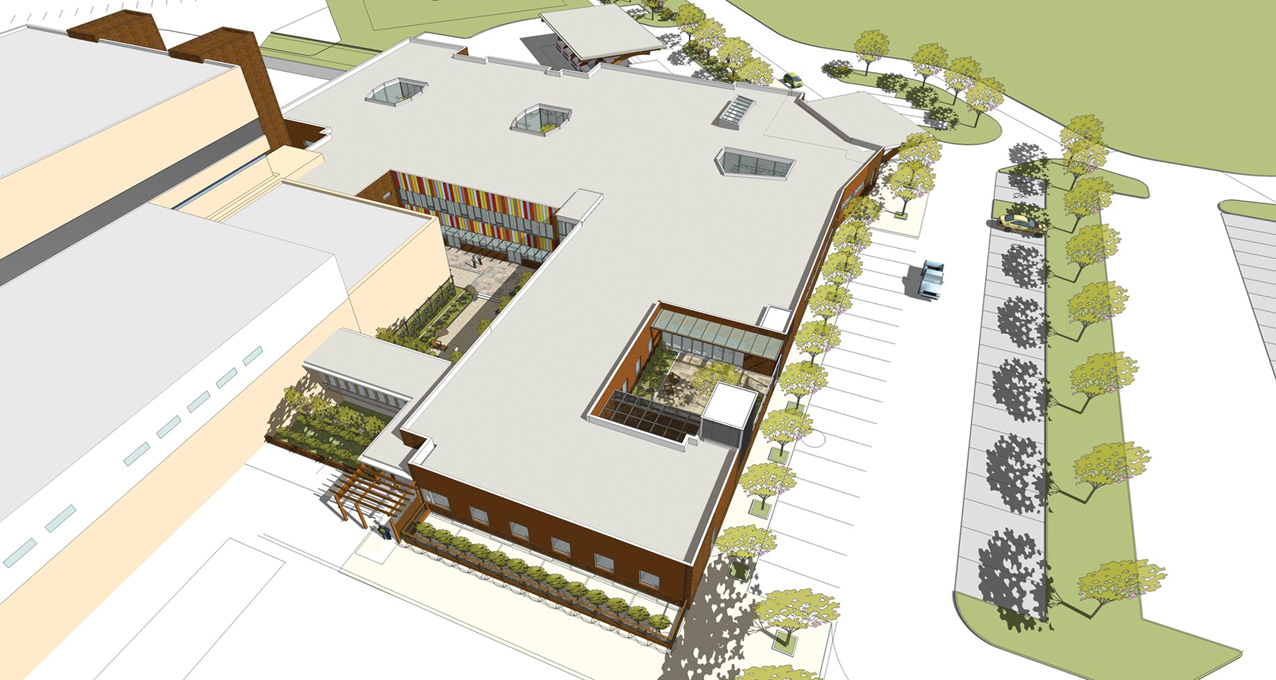
Interior of the new emergency department at Nanaimo hospital
The tripling in size of an emergency department at Nanaimo Regional General Hospital, in Vancouver Island, Canada, offered designers the opportunity to improve the safety of the environment and cut operational energy usage.
David Clark, principal at Stantec Consulting, told a CIBSE-supported seminar at the ASHRAE Winter Conference in Chicago how the designers had incorporated a thermal labyrinth to provide cooling and heating for the £22m (CAD$37m) 10,000m2 facility. The project included a new psychiatric emergency services and psychiatric intensive care unit, plus the existing emergency department.

The thermal labyrinth is located in the basement of the new emergency department building (inset below). Water-filled containers increase the accessible thermal mass, but seismic requirements reduced the efficacy of these repurposed food-storage vessels, as they were intended to be perpendicular to the airstream, with air passing through holes in the ‘dimples’
Nanaimo, in British Columbia, has a temperate climate – classified as cool-summer Mediterranean – with design conditions in winter (1%) of -7°C db and summer (July 2.5%) of 26°C db, 18°C wb. The internal design conditions for the project were winter 21°C, 30-35% RH minimum and, summer, 24°C, 50-60% RH maximum. The primary requirement was to deliver a building that met high levels of patient and occupant comfort and experience.
The idea was to bring nature into the building wherever possible. The courtyard-based plan incorporated visual access to green spaces and the surface finishes made extensive use of natural materials. The useful daylight was carefully optimised, and it works in conjunction with bespoke lighting controls and automated exterior solar shading.
In terms of thermal comfort, the design used the full basement void as a thermal labyrinth, to pre-cool or pre-heat supply air. It did this by storing the heat of the day, or the cool of the night, and taking advantage of the diurnal range. Displacement ventilation, which requires moderate supply temperatures, was a good match for the labyrinth system and – through CFD modelling – was shown to be suitable to meet the air-distribution requirements.
Project objectives
LEED Gold certification
Energy efficiency
Redundancy and backup systems
Patient and occupant comfort
Infection reduction
Ease of operation and maintenance
This was used in conjunction with high-level radiant heating and cooling employing a 6-way valve to allow seasonal changeover. Particular care was taken to prevent condensation on the cooling radiant panels by ensuring that the chilled water temperature was always greater than the air dewpoint temperature, controlled using feedback from sensors on the panel supply pipe.
The annualised saving from the thermal labyrinth is £2,700 (CA$4,780) – close to the prediction in the pre-construction modelling exercise.
The building energy performance index (BEPI) is 524kWh·m-2·y-1, delivering annual savings – compared with the reference building – of 939GJ gas and 1,071,892kWh electricity, and a 39kW demand reduction. The total annual savings were £34,000 (CAD$59,815).

A scale drawing of Nanaimo Regional General Hospital in Canada
In addition to the savings in energy, the C-Difficile infections have been reduced by half, hospital staff sick time is less than half that of the previous year, and annual overtime costs have been reduced by £292,000 (CAD$500,000) compared with the previous year, with an overall improvement of the staff time loss-to-injuries rate.
A key achievement has been that the patient rating of perceived care has been reported as very good by 90% of patients and families.
- The technical sessions from the meeting were recorded and are available (at cost) here.
